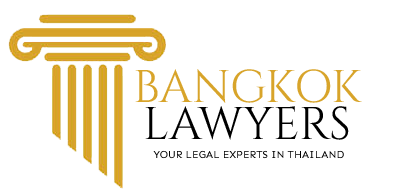

Litigation in Thailand rewards meticulous preparation, fast preservation of evidence and smart early use of interim relief. The system is civil-law in character: judges control evidence, discovery is narrow, and the court’s power to order provisional measures is an essential tool. This guide gives a practical roadmap from day-one preservation to enforcement, plus tactical advice you can act on immediately.
Thailand’s ordinary judiciary is three-tiered: Courts of First Instance, Courts of Appeal and the Supreme Court. There are also specialist venues (Central Intellectual Property & International Trade Court; Central Bankruptcy Court; Central Tax Court; Labour Courts) that handle disputes within their statutory remit. For property or contract claims the proper forum is usually where the defendant is domiciled or where the cause of action arose (often the situs of the asset). Choosing the right court at the outset avoids procedural delays and jurisdictional objections.
A civil action begins by filing a statement of claim and paying court fees (fees are usually percentage-based on the claim). Domestic defendants are served by court officers; foreign defendants require formal diplomatic/Hague service, which can add substantial delay. After service a defendant normally has 15 days to file a defence. If the defence is not filed, the plaintiff may seek default judgment — but courts will still scrutinise damages and will not automatically rubber-stamp excessive claims.
Practical point: draft a concise, evidence-centered claim. Thai judges expect a clear chronology and annexed documentary proof from the start.
Thailand does not have broad discovery; parties must list the evidence they intend to use and the court admits specified documents and witness testimony at scheduled hearings. Because of that, the winning party is often the one who has the best contemporaneous records.
Immediate actions the day a dispute arises:
If you fear destruction of evidence, file an application asking the court to preserve or seize documents; courts can grant ex-parte preservation orders where urgency and risk are shown.
Interim measures are often decisive. Thai courts can grant provisional remedies (freezing orders, injunctions, attachment of assets, seizure of documents), usually on an urgent, ex-parte basis. To succeed you generally must show:
Prepare evidentiary exhibits for the application: bank balance snapshots, transfer trails, photos, and sworn affidavits of risk. For cross-border assets remember Thai courts are reluctant to order asset freezes outside the jurisdiction — plan to secure domestic assets first and use arbitration or foreign courts for overseas preservation.
Trials are judge-led and typically feature oral witness testimony and expert evidence. The court schedules evidentiary hearings after case management. Expect the judge to focus on documentary proof and expert technical analyses rather than aggressive cross-jurisdictional discovery tactics. After the hearings a judgement is usually issued within weeks to months. Appeals focus on legal errors and, in some cases, material factual re-examination; an appeal path extends total dispute time substantially.
Practical tip: present tightly organised bundles (indexed exhibits and a short factual chronology) — Thai judges appreciate order and brevity.
A final, executable judgment is enforced through the Legal Execution Department (LED). Enforcement tools include garnishment of bank accounts, seizure and public auction of movables and immovables, attachment of salaries, and appointment of receivers in insolvency. Enforcement is straightforward when the debtor has identifiable Thai assets; it is harder — though not impossible — when assets are abroad or concealed.
Before you sue, map likely assets (bank accounts, registered land, receivables) and consider preservation measures (interim garnishment or injunctions) to make enforcement realistic.
For international commercial deals, arbitration (SIAC/ICC/UNCITRAL, etc.) is often preferable — confidentiality, party autonomy and New York Convention enforcement matter. However:
For domestic property and title disputes the courts remain mandatory because courts control land registration and public records.
Thailand does not have a seamless exequatur system for all foreign judgments; many foreign court judgments must be re-litigated or enforced via local proceedings. By contrast, arbitral awards under the New York Convention are generally recognized and enforced in Thailand, subject to standard public policy and procedural defenses. If cross-border enforceability is critical, prefer arbitration.
Simple uncontested claims may resolve in a few months. Complex, fact-heavy disputes (property, construction, fraud) often take 12–36 months to final judgment and longer with appeals. Court fee exposure and statutory cost awards do not fully cover counsel fees, so budget for experts, translations, legalization, interim relief and enforcement. Consider security for costs or escrow arrangements where funding is uncertain.
Litigation in Thailand is a process of control and preservation. Because discovery is narrow and interim relief is discretionary, the party that documents facts early, secures evidence and moves quickly to preserve assets has the tactical advantage. Use arbitration for international final relief but rely on Thai courts for urgent domestic preservation; appoint experienced local counsel early — procedural missteps in service, evidence form or timing can be fatal to an otherwise strong case.
